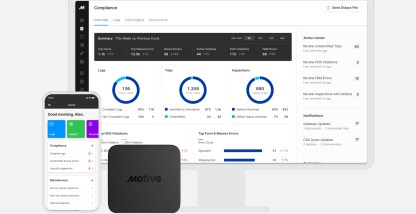In recent years, the trucking industry has witnessed significant regulatory changes, and one of the most anticipated developments is the introduction of electronic logging devices (ELDs) in California’s intrastate trucking sector in 2024.
This transformation is set to bring about a myriad of changes and challenges that will reshape the way trucking companies operate within the state. In this comprehensive article, we delve into the implications of ELD implementation on California’s intrastate trucking industry and how it will impact businesses, drivers, and the overall logistics landscape.
Understanding the ELD Mandate
Before we delve into the specifics of how ELDs will affect the intrastate trucking industry in California, let’s first gain a clear understanding of what ELDs are and why they have become a focal point in the transportation sector.
What are electronic logging devices (ELDs)?
Electronic logging devices, commonly referred to as ELDs, are digital tools designed to monitor and record a driver’s hours of service (HOS) electronically. These devices are integrated with a vehicle’s engine and are responsible for tracking driving time, rest breaks, and other crucial data. ELDs replace the traditional paper logbooks that drivers used to record their HOS, thereby enhancing accuracy and compliance.
The California ELD Mandate – a closer look
California has been at the forefront of adopting stringent regulations to improve road safety and compliance in the trucking industry. While the federal government implemented the ELD mandate for interstate trucking companies in 2017, California has extended this requirement to intrastate operations, with full enforcement set to begin in 2024.
California ELD Requirements
The CA ELD mandate encompasses several key requirements, including:
- ELD Installation: All commercial vehicles operating within California’s intrastate boundaries will be required to have ELDs installed and functioning properly.
- Data Transfer: ELDs must be capable of transferring data seamlessly to law enforcement authorities during inspections.
- HOS Compliance: Drivers must adhere to California hours of service rules, as monitored by the ELDs, to prevent driver fatigue and improve road safety.
- Exemptions: While the mandate applies to most intrastate operations, there are certain exemptions, such as the use of pre-2000 model-year trucks and short-haul operations.
Implications for trucking companies
The California intrastate ELD mandate will have a profound impact on trucking companies and how they manage their operations.
Improved Compliance and Accountability
California ELD requirements will ensure that drivers strictly adhere to HOS regulations. This will reduce instances of driver fatigue and enhance overall safety on California’s roads. Trucking companies will benefit from reduced liability and improved compliance with state regulations.
Operational Efficiency
With real-time data on driver hours, trucking companies can optimize their operations more effectively. This means better route planning, reduced idle time, and improved fuel efficiency, ultimately leading to cost savings.
Transition Costs
While the long-term benefits are evident, there will be initial costs associated with the purchase and installation of ELDs. Trucking companies will need to invest in both the hardware and software required for compliance.
Impact on truck drivers
Truck drivers will experience significant changes in their day-to-day routines due to the implementation of ELDs.
Adherence to Strict HOS Regulations
To ensure California ELD compliance, drivers will need to strictly adhere to California hours of service (HOS) rules to avoid penalties and fines. This may require adjustments to their schedules and routines.
Improved Record-Keeping
The shift from paper logs to digital ELDs will streamline record-keeping for drivers, reducing administrative burdens and potential errors.
Overall industry impact
The broader trucking and logistics industry in California will also witness notable shifts as a result of the California ELD rules.
Leveling the Playing Field
With all intrastate carriers using ELDs, competition in the industry is likely to become more equitable. Smaller carriers will have access to the same tools for compliance and efficiency as larger counterparts.
Potential Capacity Crunch
In the initial stages of ELD implementation, there may be disruptions in capacity as companies adjust to the new regulations. This could affect supply chains and lead to potential delays in goods delivery.
Conclusion
The introduction of electronic logging devices in California’s intrastate trucking industry in 2024 is a significant development that will impact trucking companies, drivers, and the overall logistics landscape. California ELD compliance will require many businesses to make changes to how they operate.
While it brings about challenges and costs, it also promises improved compliance, safety, and operational efficiency in the long run. As we approach 2024, it is imperative for all stakeholders in the industry to prepare for this transformative change and leverage the benefits that ELDs can offer.
Motive — your ELD compliance solution
Need help with compliance? More than 500,000 drivers and 65,000 companies trust Motive with their compliance and fleet management needs. Request a free demo today.









